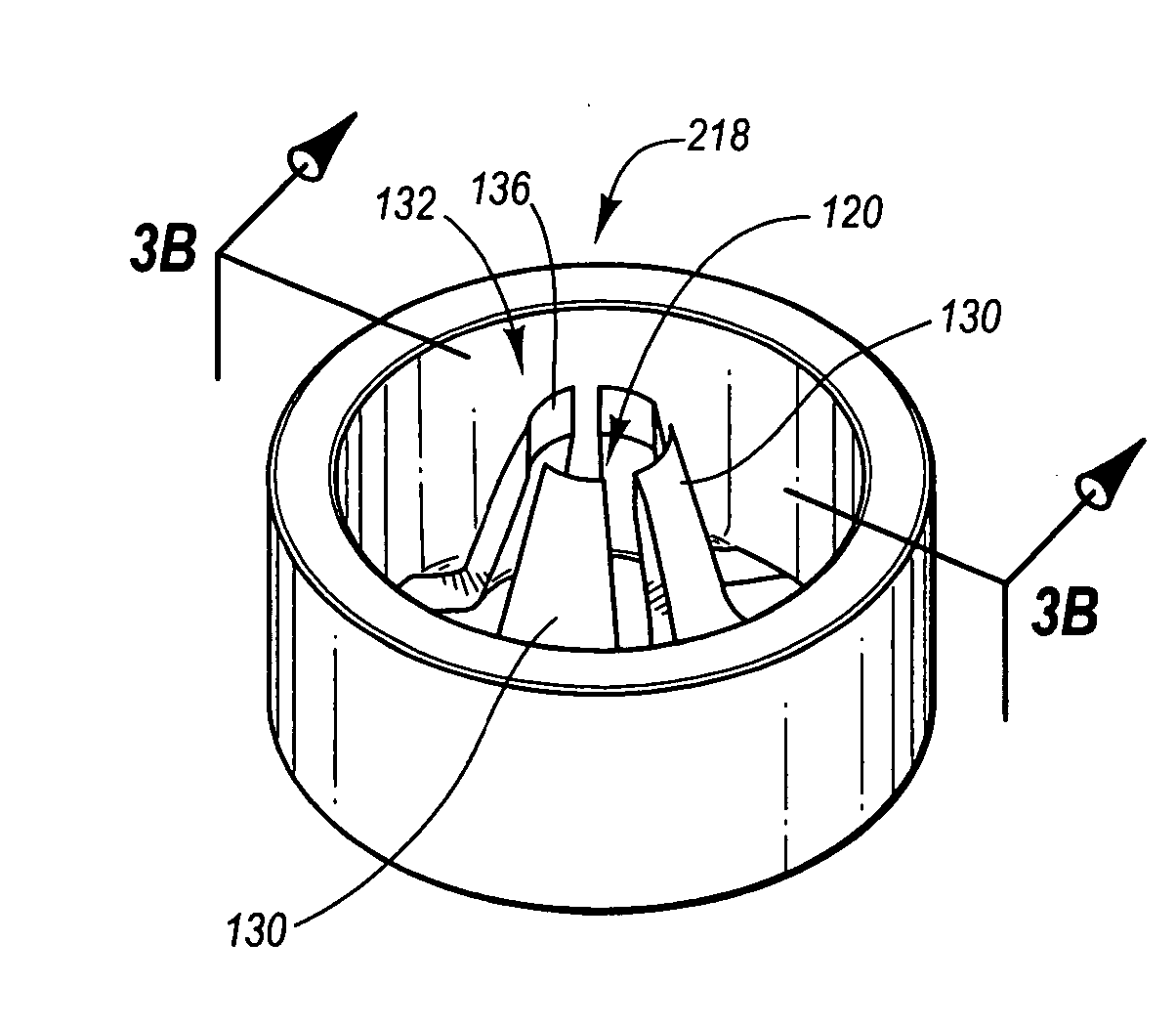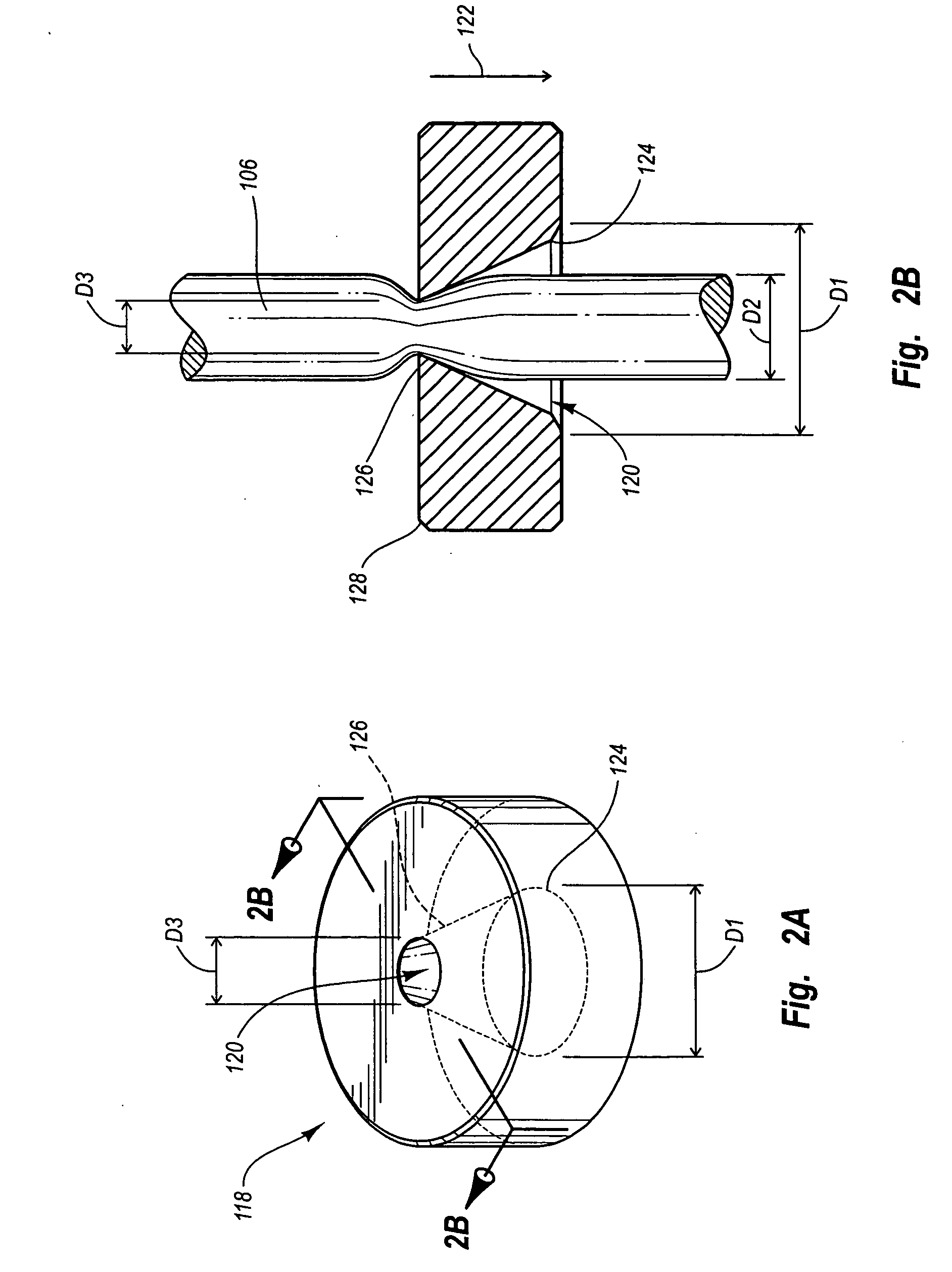Vascular sealing device with locking system
a sealing device and locking system technology, applied in the field of medical devices, can solve the problems of difficult manufacturing of sealing devices with slipknots, and achieve the effect of facilitating the one-way locking movement of the locking apparatus
- Summary
- Abstract
- Description
- Claims
- Application Information
AI Technical Summary
Benefits of technology
Problems solved by technology
Method used
Image
Examples
Embodiment Construction
[0032] The present specification describes techniques and apparatus for closing an internal tissue wall puncture, preferably using a closure device and an introducer, while reducing the effects of sealing plug repositioning. While the methods and devices shown and described below include introducers and puncture sealing devices, the application of a locking apparatus to secure a sealing plug is not limited to these specific devices. The principles described herein may be used to hold a locking apparatus along a suture or other filament for any device, but may be particularly useful to retain a sealing plug at an internal tissue puncture. Therefore, while the description below is directed primarily to arterial procedures, the methods and apparatus may be used according to principles described herein with any filament to limit movement of a locking device to one direction along the filament.
[0033] As used in this specification and the appended claims, the term “tissue” means an aggre...
PUM
 Login to View More
Login to View More Abstract
Description
Claims
Application Information
 Login to View More
Login to View More - R&D
- Intellectual Property
- Life Sciences
- Materials
- Tech Scout
- Unparalleled Data Quality
- Higher Quality Content
- 60% Fewer Hallucinations
Browse by: Latest US Patents, China's latest patents, Technical Efficacy Thesaurus, Application Domain, Technology Topic, Popular Technical Reports.
© 2025 PatSnap. All rights reserved.Legal|Privacy policy|Modern Slavery Act Transparency Statement|Sitemap|About US| Contact US: help@patsnap.com



